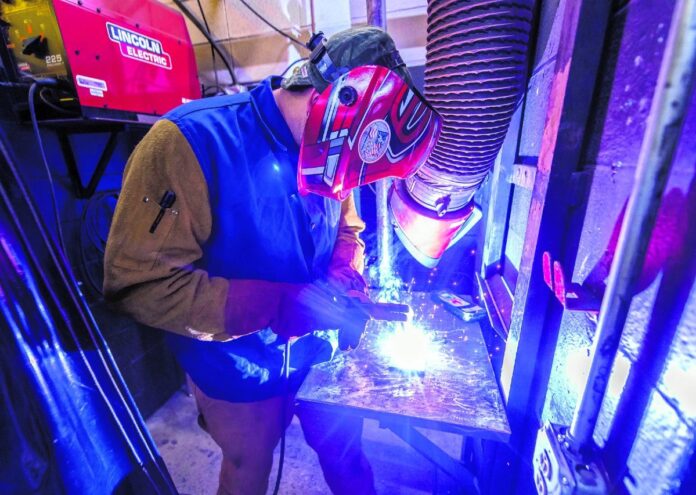More high school graduates are moving away from traditional, four-year bachelor’s degree programs and instead deciding to go to a two-year program or enter the workforce immediately after high school.
There was a statewide decrease in high school graduates going to college of any sort, to 61% in 2018 from 65% in 2015, according to the 2021 Indiana College Readiness Report.
Indian Creek High School, part of a rural Johnson County district, and Whiteland Community High School, part of a suburban one, both saw decreases in the percentage of students getting four-year degrees, though the choices of students in those schools differed when it came to the alternatives.
At Whiteland high school, 50% of students said they were going to a four-year college upon graduation in 2016. That figure dipped to 47% among this year’s graduates. The percentage of Whiteland graduates who went on to college actually increased, however, as 19% of seniors said they were going to a two-year college, compared to 12% of the Class of 2016, said Benji Betts, the school’s principal.
An increase in student interest in skilled trades may be attributed to some of the enrollment in two-year college programs, he said.
“For us, we’re really trying to figure out what students are interested in,” Betts said. “I think part of where we’re seeing trades and apprenticeships kick in is pathways. Kids will be better prepared for the future. We’re trying to help them hone in on what they’re interested in and what they will do when they’re done with school.”
Under graduation pathways, which has been gradually phased in but is required for every Indiana high school student in the Class of 2023 and beyond, students are not only required to fulfill credit requirements in core subjects such as math, science and social studies, but students must also complete a project-based, service-based or work-based experience meant to demonstrate employability skills. Pathways will likely result in more students interested in pursuing jobs or two-year degrees focused on skilled trades after high school, Betts said.
At Indian Creek High School, the decrease in students attending four-year colleges correlated with an increase in students entering the workforce after high school. In 2016, 61% of seniors went to a four-year college, and 15% entered the workforce. This year, those figures were 54% and 22%, respectively. The percentage of students opting for two-year programs remained roughly the same, going to 14% this year from 15% in 2016, principal Luke Skobel said.
With 144 students in the graduating class, though, the percentage change amounts to about 10 students shifting from four-year colleges to the workforce. Indian Creek High School has added teachers in computer science, agriculture and business to accommodate pathways requirements.
More students may be going to the workforce rather than college after high school due to the costs of attending a four-year program, Skobel said.
“I know there is more of an emphasis or more information pushed out to students about making sure they make the right decision for them post-high school,” She said. “For four-year universities and any post-secondary institutions, those costs are going up pretty significantly. We council our kids in making sure they have a plan for what comes after high school. Parents are very wary of the costs that come with college.”





